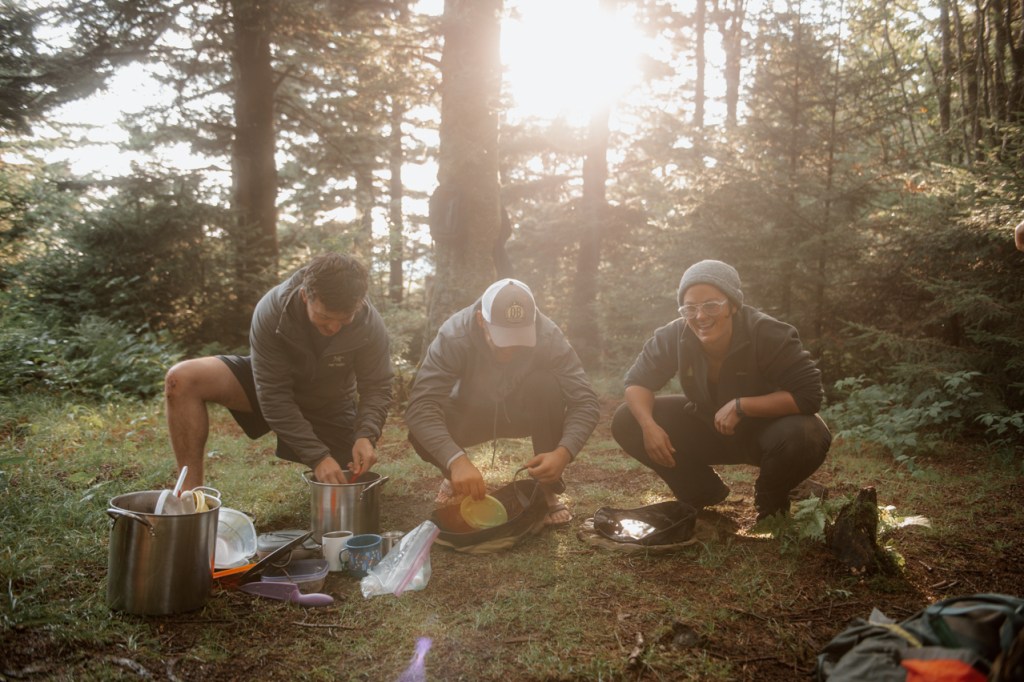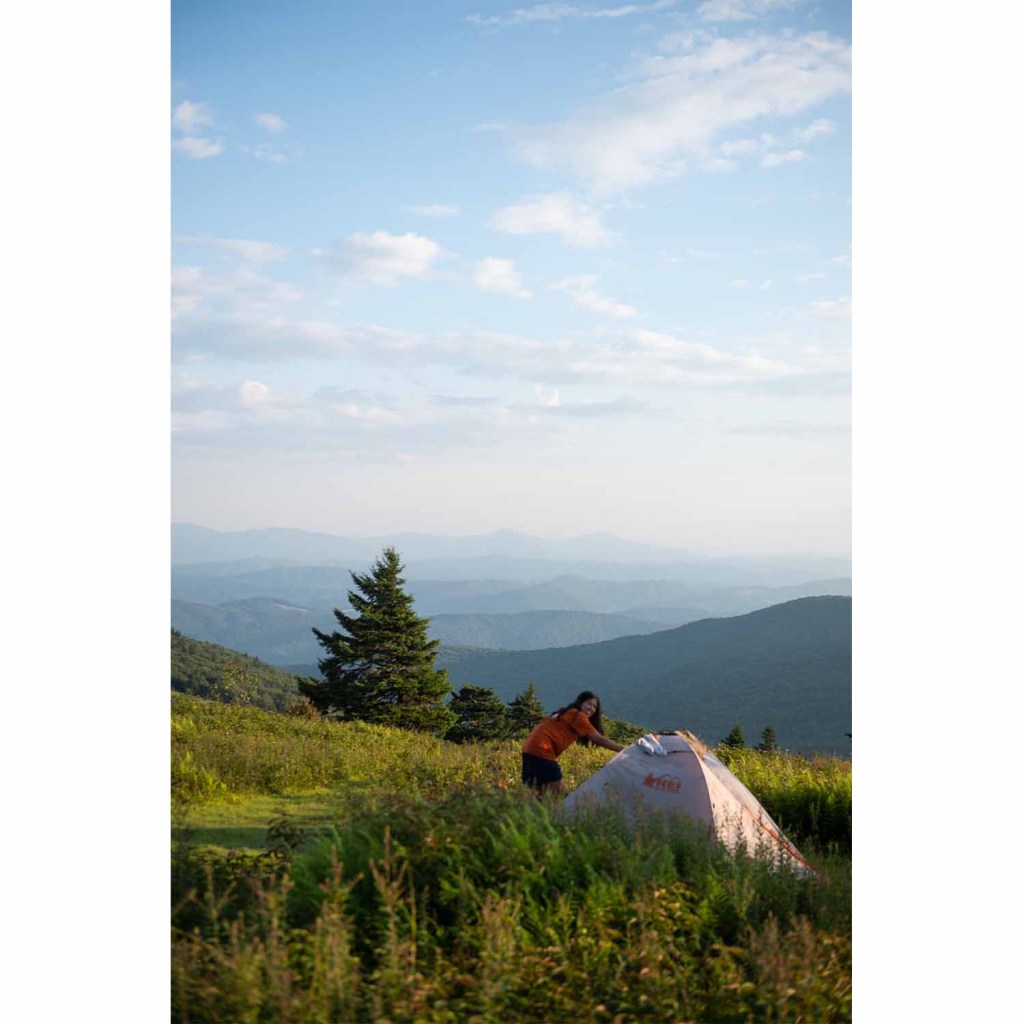The crosscut saw is an impressive tool. At six feet long, with sharp teeth and smooth wooden handles on either end, it takes two people moving perfectly in unison to rip through the belly of a fallen tree. To watch one in action is mesmerizing,
“It’s the gateway drug to wilderness maintenance,” said Eric Giebelstein, a project manager for Southern Appalachian Wilderness Stewards (SAWS), a nonprofit that maintains wilderness areas in the South. The crosscut is essential to that maintenance, since chainsaws are forbidden in wilderness. “Once people learn to use this saw, they’re hooked.”
“Watching the wood fall from the tree like rain when you’re using it—it’s so satisfying.” said Dory Lustig, a 23-year-old Naval officer who learned to use the tool while attending the U.S. Naval Academy in Annapolis, Md. Wielding a crosscut might seem like an odd skill to pick up while studying for a career spent defending our seas, but for the last four years, officers-in-training (sometimes called midshipmen) have been using them to maintain trails in the South’s federally designated wilderness areas through a partnership with SAWS.
“There’s a huge backlog of maintenance in our wilderness areas,” Giebelstein said. “These areas are remote, and hard to get to and a lot of volunteer trail clubs don’t have the skill set or capacity to get out into these places. The maintenance is never-ending.”

Reina Carroll, a Naval Academy student graduating in 2020, takes a well-deserved break in camp after a day of arduous work to improve conditions on Virginia’s Mount Rogers Summit Trail. (Photo Courtesy: Maggie Rotanz/National Forest Foundation)
Enter the Navy. Since 2016, a rotating crew of Naval Academy students has spent part of the summer clearing fallen trees, beating back brush and forging new trails in wilderness areas in Virginia, West Virginia, North Carolina and Tennessee. More than 40 midshipmen have gone through the SAWS program in the last four years, spending eight-day stints in the backcountry. In 2018, they built or maintained more than 8 miles of trail and removed 36 downed trees in Virginia’s Ramseys Draft Wilderness. In 2019, the crew rolled up their sleeves in nine different wilderness areas, mostly in Virginia, where they focused on fixing older trails with better water drainage. They improved five miles of trails and put their crosscut skills to work clearing 236 downed trees.
The partnership is made possible in part by REI through its REI Co-op World Elite Mastercard cardmembers. When a cardholder makes a purchase with their card, REI donates to nonprofit partners that enhance trails and habitats. In 2019, REI donated to the National Forest Foundation, which uses the money to fund 10 to 15 projects across the United States, including the SAWS/Naval Academy program.*

Naval Academy midshipmen clean up after a camp meal during an eight-day work stint along the Mount Rogers Summit Trail. (Photo Courtesy: Maggie Rotanz/National Forest Foundation)
“As far as I know, there’s no other program that taps into the military like this in the United States,” said Mark Shelley, eastern field program director for the National Forest Foundation, which partners with SAWS, the Naval Academy and the U.S. Forest Service to support the program. “It’s accomplishing a whole lot on the ground, and bringing in folks that wouldn’t otherwise get the opportunity to do this kind of work.”
The SAWS partnership isn’t just a boon for wilderness areas—it also offers would-be naval officers critical leadership training in some of the United States’ most remote public lands. Traditional Naval training programs require students to shadow officers on submarines or aircraft carriers. But SAWS allows officers to lead a stewardship crew in remote forests where the students grapple with distinct obstacles.
“This kind of work challenges you to get out of your comfort zone,” said Marine officer Jose Arroyo, (REI member since 2013). “Personalities come out in the backcountry and you have to learn how to work together. That kind of peer leadership can be the hardest form of leadership to develop.”
Arroyo got to work developing the SAWS program in 2016 while studying at the Naval Academy. As a teenager, he’d participated in a similar opportunity designed by SAWS and The Wilderness Society to engage at-risk youth. He hoped his own program would help midshipmen develop peer-to-peer leadership skills, ones that are harder to acquire in the Naval Academy because of the emphasis on rank.

The Naval Academy crew camped in the Lewis Fork Wilderness while working to improve a spur off the Appalachian National Scenic Trail in 2018. (Photo Courtesy: Maggie Rotanz/National Forest Foundation)
“Trail maintenance in the backcountry is an awesome way to develop peer leadership under stress,” echoed Lustig, who worked on SAWS crews for two summers, in 2016 and 2017. Training in the wilderness, up against foul weather and mounting fatigue, was a transformational experience for her: “I learned how to manage different personalities under stress, and how to speak up if I have a potential solution to a problem. Personally, my work with SAWS helped me develop the confidence I need as an officer.”
Beyond leadership skills, Arroyo hopes SAWS gives students a chance to connect with the lands they plan to defend. He credits one sleepless night in a tent while working on a crew in Tennesee’s Big Frog Wilderness in 2017 with helping him hone that perspective: It was raining, but he opened his tent fly, sat still and watched the forest around camp.
“I saw all the bugs crawl out of their hiding places. I saw rain roll off the grass. I heard the leaves rustle,” Arroyo said. “It’s so calming, so soothing. There’s something about nature that moves me more than anything else. When you’re still and watch nature come alive, you realize how important it is to protect these lands and be stewards of it.”
______
*This year, REI will donate $0.10 per REI Co-op Mastercard purchase transaction made to the National Forest Foundation, up to $1 million. Non-Purchase transactions, including cash advances, convenience checks, balance transfers, and other advance transactions as defined in the Cardmember Agreement, as well as interest charges and fees, do not qualify. Transactions posted in late December of the current year may be applied in the following year. REI may change the benefit or named charity in future years. REI is solely responsible for making the donation.
The creditor and issuer of the REI Co-op Mastercard® is U.S. Bank National Association, pursuant to a license from Mastercard International Incorporated.
© 2019 U.S. Bank
© 2019 Recreational Equipment Incorporated. All rights reserved.


